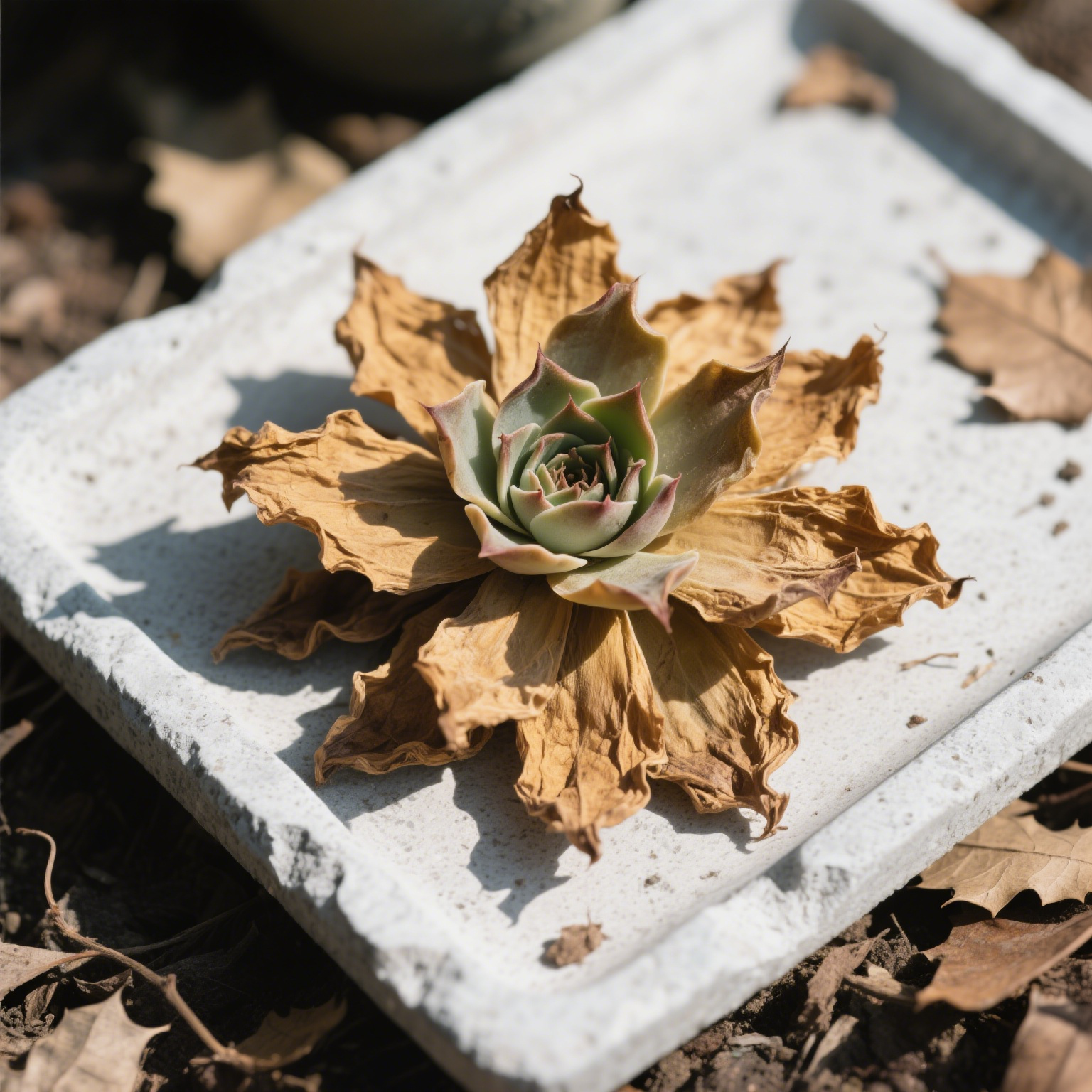
Why Are My Succulents Shriveling? Top Causes & Solutions
Your once full, watery, and vibrant succulents now look as if they've experienced a harsh desert drought. Don't panic -- even here in the U.S., dried out succulents are a common problem for seasoned plant lovers. Figure out the reasons behind it, and you can successfully save those succulents.

Overwatering: the invisible killer
Many people mistakenly believe that succulents can be left to grow. In reality, overwatering is the number one cause of dried-out leaves. Unlike tropical plants, succulents store water in their leaves, stems, and roots. If you water succulents every other day, as you do with greens, their cells will rupture from the excess water, causing the leaves to become limp and crumpled.
The solution: use the “pot dipping method”. Pour water into a shallow dish and place the pot with the succulent on top, allowing the soil to absorb the water from the bottom. Wait for the top layer of soil to dry completely (usually after 7 to 10 days) and repeat the process. This method mimics the natural rainfall cycle of the deserts of the southwestern United States, where succulents are native.

Underwatering: craving your attention
On the other hand, succulents need more water than you might think, especially during the peak growing season from spring to early fall. If the soil dries out hard and the leaves become thin and paper-like, your plant is signaling for help.
The solution: check soil moisture with a wooden stick. Insert the stick into the pot, and if the top is clean and dry when you pull it out, it's time to water. Remember, succulents like infrequent but thorough watering. A good way to do this is to water until excess water runs out of the drainage holes.
Light issues: finding the optimal balance
Succulents are light-loving by nature, but too much direct sunlight can burn the leaves and cause them to dry out and turn brown. Conversely, not enough light can cause them to grow in vain (the technical term is “watering down”) and lose their full form. In the U.S., placing succulents on a south-facing windowsill provides ideal light, but beware of strong afternoon sunlight on a hot summer day in Arizona or Florida.
SOLUTION: Allow the plant to gradually acclimate to the new light environment. If moving from indoors to outdoors, start with 1 to 2 hours of morning light, then increase the light time by 30 minutes a day. Filter strong sunlight with thin curtains or move the pots to a shaded patio when the light is at its strongest
Temperature extremes: hot and cold
Although succulents are hardy, extreme temperatures can still take their toll. Frost can damage cells and cause leaves to turn black and rot, while prolonged exposure to temperatures above 90 degrees F (32 degrees C) can lead to dehydration. Indoor succulents placed by drafty windows or near heaters during Minnesota's frigid winters or Texas's scorching summers can face similar stress.
The solution: keep an eye on the local weather forecast. Move outdoor succulents indoors when temperatures drop below 50 degrees F (10 degrees C). During heat waves, use a parasol for shade or move plants to a cooler location. Make sure indoor succulents are kept away from vents and heaters.
Pests and diseases: invisible invaders
Mealybugs, red spider, and fungal infections can also cause succulents to dry out. Mealybugs leave cottony white spots, while red spiders make tiny spider webs. Root rot, on the other hand, is usually caused by overwatering and prevents the plant from absorbing nutrients, causing the leaves to wilt.
Solution: As soon as you notice the infection, isolate the affected plants. Remove the pests by wiping the leaves with a cotton swab soaked in medical alcohol. For root rot, remove the plant from the pot, cut off the rotted roots, and replant in fresh, well-drained soil designed for cactus succulents.
Repotting Conundrum: Giving Roots Room to Grow
As succulents grow, they can fill up the pot. Plants with restricted root systems have trouble absorbing water, which in turn leads to drying out. If you notice roots growing out of drainage holes or the soil drying out unusually fast, it's time to repot the plant.
SOLUTION: Choose a new pot that is 1 to 2 inches wider than the original pot and has adequate drainage holes. Use a soil mix to increase permeability. Gently loosen the roots before planting, and don't water for a week after planting to allow the roots to recover.
Rejuvenation of succulents
Dried-out succulents are not hopeless, they are just expressing a need. By troubleshooting the problem according to your local climate, watering habits, and plant care practices, you can revitalize them.
Remember, every yellowed leaf is a lesson learned, and every full, juicy succulent is a testament to your gardening skills. Grab your watering can, adjust your shade curtains, and get ready to make your succulents thrive again!
Share